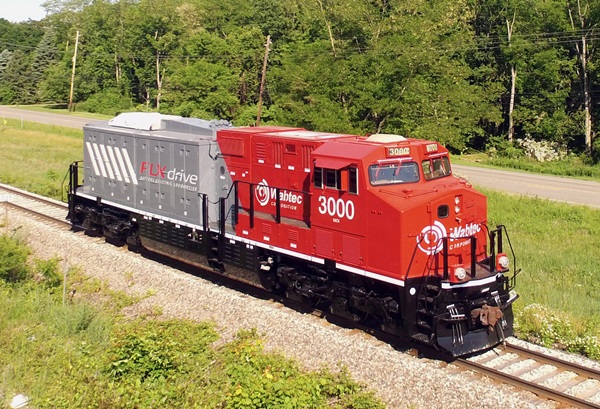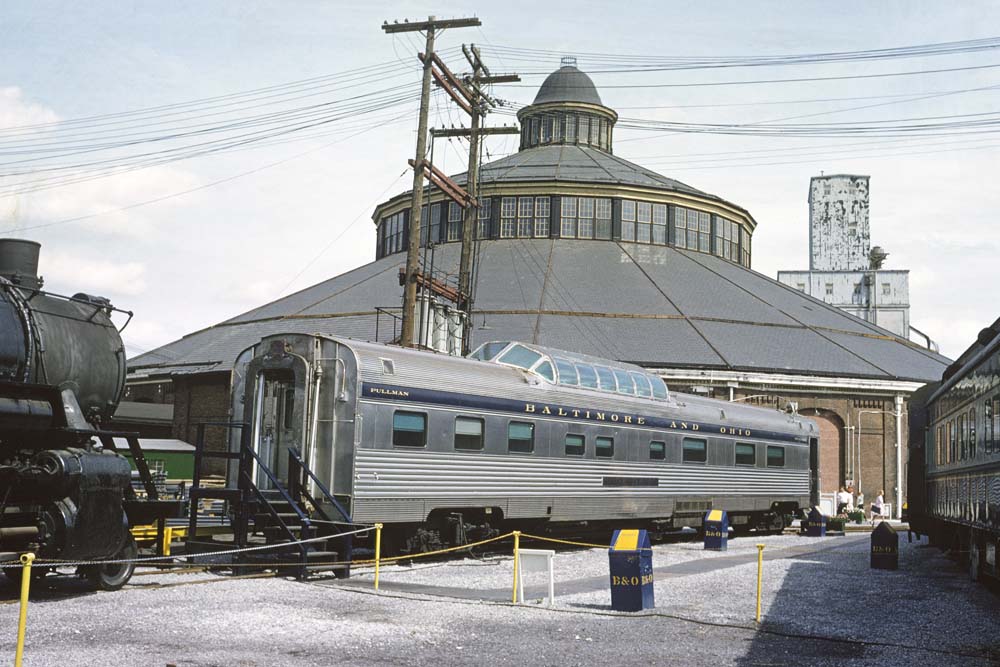
As the world continues to shift toward more sustainable and eco-friendly modes of transportation, many industries are exploring new technologies that can help reduce their carbon footprint. The railroad industry, in particular, is looking for ways to reduce emissions and become more environmentally friendly. One potential solution is battery-powered locomotives. But are they really possible in the near future?
Battery-powered locomotives are not a new concept. In fact, the first battery-powered locomotive was built in the late 19th century. You read that right: Robert Davidson, a Scottish inventor, built the world’s first battery-powered locomotive in 1842. An American inventor, Charles Grafton Page, followed in his footsteps and built a similar locomotive that was tested on the Baltimore & Ohio Railroad in 1851. It reached 19 mph before breaking down.
Unfortunately, despite its early pioneers, battery-powered locomotive technology was not advanced enough at the time to make it a practical solution for the railroad industry to replace expensive steam locomotives. Over time, as advancements have been made in other industries, battery technology and electric motors are now a much more likely alternative to diesel locomotives.
The Benefits of Battery-Powered Locomotives
One of the primary benefits of battery-powered locomotives is their potential to reduce emissions. Traditional diesel locomotives emit a significant amount of greenhouse gases, contributing to air pollution and climate change. Battery-powered locomotives, on the other hand, produce no emissions during operation.
In addition to being more environmentally friendly, battery-powered locomotives offer a number of other benefits. They are quieter than diesel locomotives, which can be important in residential areas or other places where noise pollution is a concern. They also require less maintenance, as they have fewer moving parts than diesel locomotives.
The Challenges of Battery-Powered Locomotives
Despite their potential benefits, there are several challenges that must be overcome before battery-powered locomotives become a practical solution for the railroad industry. One of the primary challenges is the weight of the batteries.
Locomotives are incredibly heavy, with some weighing up to 200 tons. Adding batteries to these already-heavy locomotives can significantly increase their weight, making it more difficult for them to climb steep grades and navigate difficult terrain. Additionally, the weight of the batteries can reduce the amount of cargo the train can carry, which could make them less cost-effective than traditional diesel locomotives.
Another challenge is the range of the batteries. Locomotives often travel long distances, and it’s important they can do so without needing to stop and recharge their batteries. While advancements in battery technology have improved the range of batteries, they are still not capable of powering a locomotive for the same distance as a tank of diesel fuel.
Finally, there is the challenge of cost. Battery-powered locomotives are still relatively new technology, and they are currently more expensive to produce than traditional diesel locomotives. While the cost of batteries is expected to decrease over time as the technology becomes more widespread, it is unclear how long it will take for the cost of battery-powered locomotives to become competitive with diesel locomotives.
999: An Experiment
Despite these challenges, there is reason to be optimistic about the future of battery-powered locomotives. Many companies are investing in the research and development of battery-powered locomotives, and some are already starting to use them in limited applications.
Norfolk Southern was an early supporter of battery-powered locomotives. Going back to 2007, the railway’s Altoona Works shops rebuilt a GP38 into a “BP4” locomotive, which has a power output of 1,500HP. The diesel prime mover was replaced with 1,080 12-volt lead-acid batteries and associated control equipment. This conversion resulted in the locomotive being renamed Norfolk Southern #999.
The development of the BP4 locomotive involved Brookville Equipment, Penn State University, the United States Department of Energy, and the Federal Railroad Administration. The program received $1.3 million in federal funding. A new battery management system was installed in 2009 to address early issues with keeping them charged. In 2014, the locomotive underwent another rebuild, during which the lead-acid batteries were replaced with lead-carbon batteries.
Despite these efforts to improve its performance, the NS 999 locomotive was ultimately unable to meet Norfolk Southern’s expectations, leading to the cancellation of the project entirely. In November 2019, 999 was placed up for auction, along with several other locomotives. The BP4 was purchased by Rail Propulsion Systems, which upgraded it for use in the Los Angeles Basin region.
Introducing the FLXdrive: Wabtec’s New Battery-Powered Locomotive
Although Norfolk Southern’s battery-powered experiment was ultimately unsuccessful, other railroads have begun experimentation with locomotive builder Wabtec, which has developed the FLXdrive locomotive. The locomotive is classified as a hybrid-electric, which works in tandem with typical diesel-electric locomotives to allow for regenerative braking. It can also operate independently for up to 30 minutes using its own battery power when not attached to another locomotive.
Regenerative braking extends its battery life with a travel range of 350 miles in ideal weather conditions. Essentially, regenerative braking converts the kinetic energy of the locomotive slowing into electrical energy that can be stored in its batteries. This not only reduces the amount of heat generated by the brakes, but also allows the FLXdrive to reuse some of the energy that would otherwise be lost, making the train more energy-efficient than its diesel-electric counterparts.
In early 2021, the California Air Resource Board, San Joaquin Valley Air Pollution Control District and Wabtec collaborated to launch a pilot testing program on BNSF Railway. The parties tested the red and gray FLXdrive locomotive, Wabtec 3000, which was situated between two conventional Tier 4 GEVO locomotives for trial runs out of Barstow. Over the course of the three-month test, the locomotive covered over 13,000 miles on BNSF’s Transcon route.
The Results Are In
BNSF and Wabtec announced in May 2021 their test resulted in an 11% decrease in fuel consumption and greenhouse gas emissions in a revenue service train. More than 6,200 gallons of diesel fuel were saved and approximately 69 tons of CO2 emissions were reduced, according to Wabtec.
The FLXdrive locomotive has been tested on other railroads too, including Union Pacific Railroad, which placed an order for 10 units in January 2022, along with 10 units of Progress Rail’s EMD Joule Battery Electric locomotive.
The Joule recovers energy through dynamic braking. When dynamic braking is activated to control train speed, the batteries are charged, saving what would otherwise be wasted energy. Progress Rail delivered the long-promised locomotive to Pacific Harbor Line’s Wilmington, Calif., facility recently for long-term testing and demonstration purposes.
Outside of North America, the FLIRT Akku is a battery-powered passenger train developed by the Swiss company Stadler. The train uses lithium-ion batteries to power its electric motors and has a range of approximately 50 miles. The FLIRT Akku is currently in use in Germany and is being tested in several other countries around the world.
While battery-powered locomotives are not yet a practical solution for the entire railroad industry, they have the potential to play a significant role in reducing emissions for Class I Railroad companies in the United States and Canada.














This sounds like wishful-thinking more than news, I’m afraid.